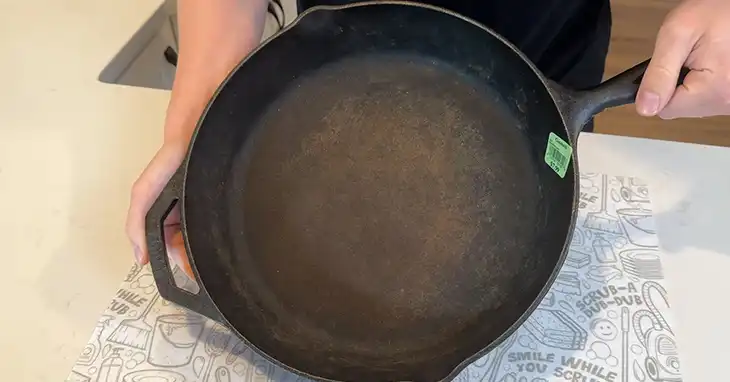Silicone vs Stainless Steel | Which One is the Better Cooking Utensil
The importance of selecting the right cooking utensils cannot be overstated. Not only do they play a crucial role in food preparation, but they also contribute to the ease and enjoyment of the cooking process. When it comes to silicone and stainless steel, both materials offer distinct advantages and drawbacks, making it essential to understand their properties before making a purchase.
In this comparison article, we’ll explore the pros and cons of each, helping you make an informed decision that fits your cooking needs and preferences. Let’s begin.

Understanding Silicone Utensils
Silicone is a synthetic, rubber-like material known for its heat-resistant properties. Derived from silicon, a naturally occurring element, silicone utensils are designed to withstand high temperatures without melting or deforming.
Silicone utensils can typically withstand temperatures up to 600°F (315°C), making them suitable for most cooking tasks.
Pros and Cons of Silicone Utensils
Here’s a table containing the pros and cons of silicone utensils:
| Pros | Cons |
| Heat-resistant up to 600°F (315°C) | May not be as durable as stainless steel |
| Non-stick surface prevents food from sticking | Can melt or deform at extremely high temperatures |
| Safe for non-stick cookware | May not sear or brown food as effectively |
| Flexible and easy to use | |
| Easy to clean and dishwasher safe |
Understanding Stainless Steel Utensils
Stainless steel is an alloy of iron, chromium, and other metals, renowned for its durability, hygiene, and corrosion resistance. These properties make it an excellent choice for cooking utensils.
Stainless steel is incredibly durable and can withstand years of use without showing significant signs of wear and tear. Hygiene: Stainless steel’s smooth surface makes it easy to clean and resistant to bacteria growth, ensuring a hygienic cooking environment. Corrosion Resistance: The chromium content in stainless steel helps prevent rusting and corrosion, even when exposed to acidic foods or moisture.
Pros and Cons of Stainless Steel Utensils
Below you’ll find a table discussing the pros and cons of using steel utensils:
| Pros | Cons |
| Extremely durable and long-lasting | Can scratch non-stick cookware |
| Resistant to high heat, suitable for searing | May transfer heat to handles |
| Easy to clean and maintain | Heavier than silicone utensils |
| Wide variety of shapes and sizes available |
Choosing the Right Utensil for the Job
When it comes to selecting the right cooking utensil, several factors come into play:
Consider Your Cooking Method
First, consider the cooking method you use most of the time. If you spend a lot of time searing, stirring, scraping, flipping, etc. For example, if you are flipping a delicate item like fish or pancakes, a flexible silicone spatula is the way to go.
Non-stick cookware may be better suited for silicone utensils, while stainless steel pots and pans can handle either material. When searing steaks or browning vegetables, sturdy stainless steel tongs or spatulas are ideal.
On the other hand, a silicone whisk can easily scrape the sides of pots and bowls without scratching the surface, making it perfect for stirring sauces or batters.
Cleaning Considerations
Silicone utensils should be washed with warm, soapy water and dried thoroughly to prevent bacteria growth. Some silicone utensils may discolor or absorb odors over time, so proper storage is essential.
Stainless steel utensils can be washed in the dishwasher or with hot, soapy water. Avoid abrasive cleaners or scrubbing pads, as they can damage the surface. Store in a dry place to prevent rusting.
Sustainability
While silicone itself is generally considered safe, its production relies on non-renewable resources and can have a significant environmental impact.
Stainless steel production is energy-intensive and can contribute to greenhouse gas emissions, but the material is recyclable and longer-lasting, potentially offsetting some of its environmental impact.
Cost
Silicone utensils can range from budget-friendly options to high-end, professional-grade tools, depending on the brand and quality.
Stainless steel utensils tend to be more expensive than their silicone counterparts, but their durability can make them a worthwhile investment in the long run.
Alternatives to Silicone and Stainless Steel
While silicone and stainless steel are popular choices, they aren’t the only options available. Here are a few alternatives to consider:
Wood Utensils
- Pros: Wood utensils are natural, eco-friendly, and can add a rustic charm to your kitchen. They are gentle on non-stick surfaces and won’t scratch or damage cookware.
- Cons: Wood utensils are not dishwasher safe, and they can harbor bacteria if not properly cleaned and maintained. They may also warp or crack over time due to exposure to moisture and heat.
Nylon Utensils
- Pros: Nylon utensils are affordable, heat-resistant, and won’t scratch non-stick cookware. They are also lightweight and easy to maneuver.
- Cons: Nylon utensils may not be as durable as silicone or stainless steel, and they can melt or deform if exposed to extremely high temperatures.
Frequently Asked Questions (FAQ)
Can I use silicone utensils in the oven?
Yes, most silicone utensils are oven-safe up to temperatures around 400°F (204°C). However, it’s essential to check the manufacturer’s recommendations for the specific temperature limits of your silicone utensils.
How do I clean stained silicone utensils?
Silicone utensils can sometimes become stained or discolored, especially when used with foods like turmeric or tomato-based sauces. To clean stained silicone, try the following methods:
- Make a paste with baking soda and water, and gently scrub the stained areas with a soft-bristled brush or sponge.
- Soak the utensils in a solution of warm water and white vinegar for 30 minutes to an hour, then scrub with a soft brush or sponge.
- For stubborn stains, you can try soaking the utensils in a solution of warm water and bleach (follow the manufacturer’s instructions for dilution ratios).
What is the best way to store stainless steel utensils?
To maintain the longevity and shine of your stainless steel utensils, proper storage is crucial:
- Dry the utensils thoroughly after washing to prevent water spots and rust.
- Store them in a dry, well-ventilated area, such as a utensil drawer or container.
- Avoid storing stainless steel utensils in direct contact with other metals, as this can cause corrosion or discoloration.
- Consider using utensil holders or dividers to prevent scratching or damage.
Are stainless steel utensils dishwasher safe?
Yes, most stainless steel utensils are dishwasher-safe. However, there are a few precautions to keep in mind:
- Avoid overcrowding the dishwasher, as this can cause utensils to rub against each other and become scratched or damaged.
- Use a mild detergent and avoid abrasive cleaners or scrubbing pads, as these can scratch the surface of the utensils.
- If possible, opt for a gentle or delicate cycle to prevent excessive heat or harsh water pressure that could damage the utensils over time.




